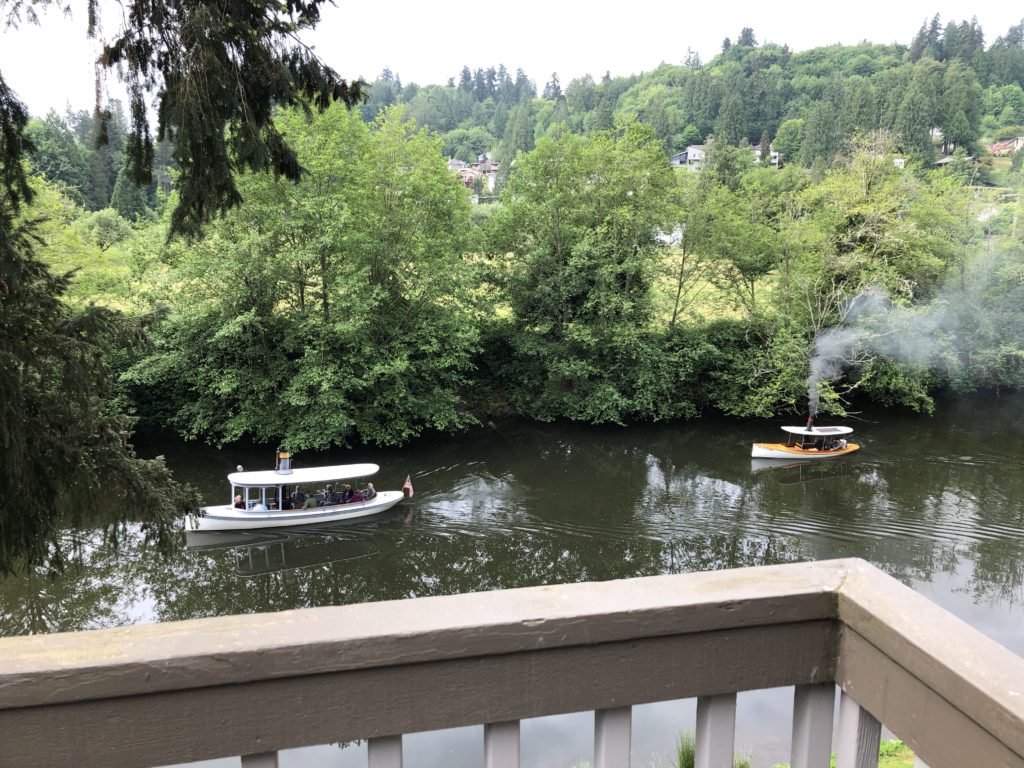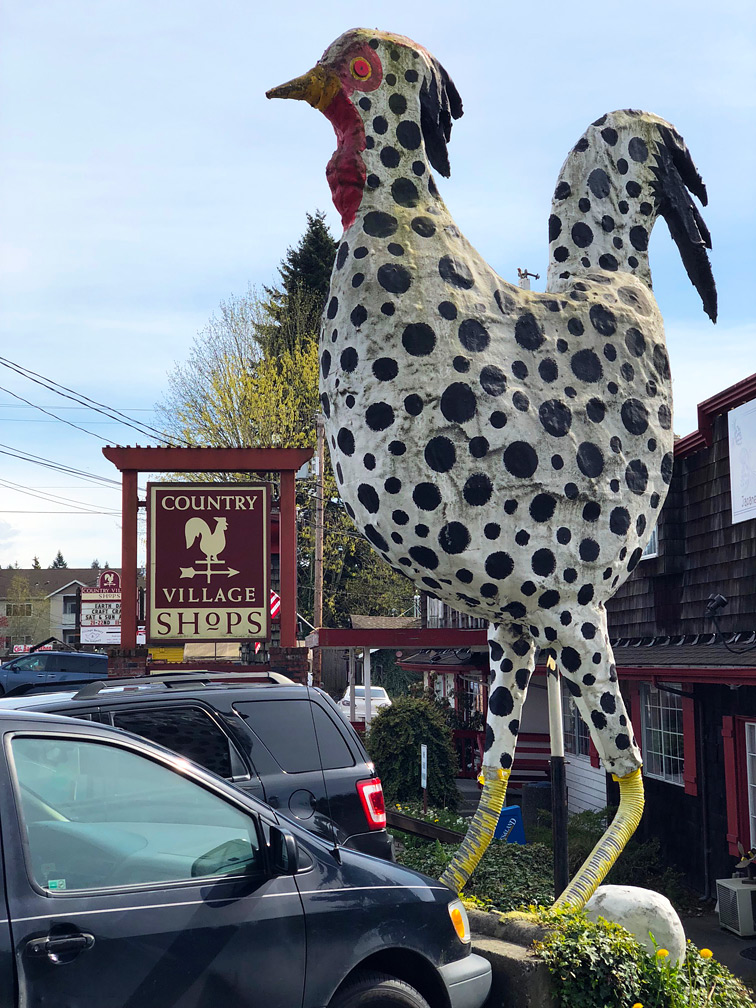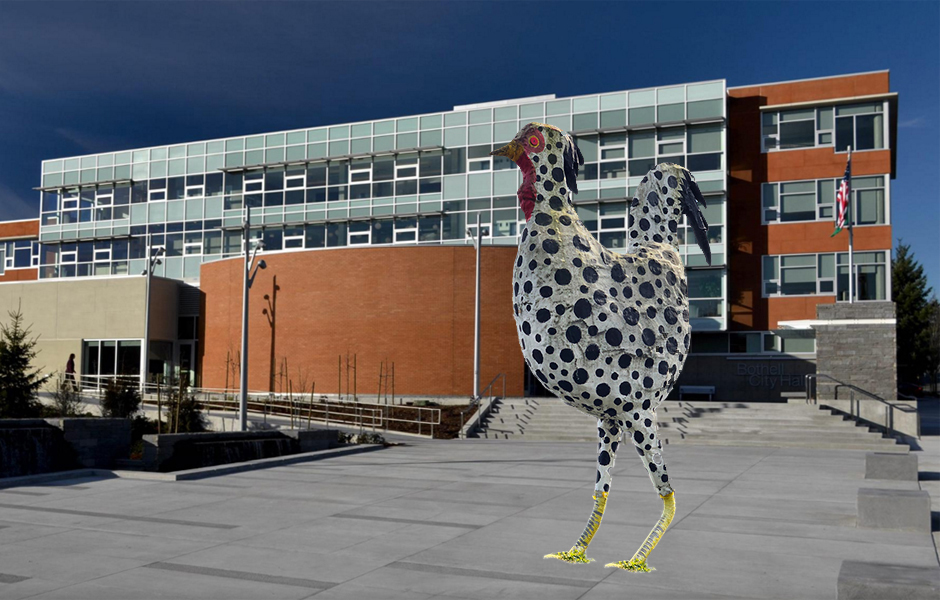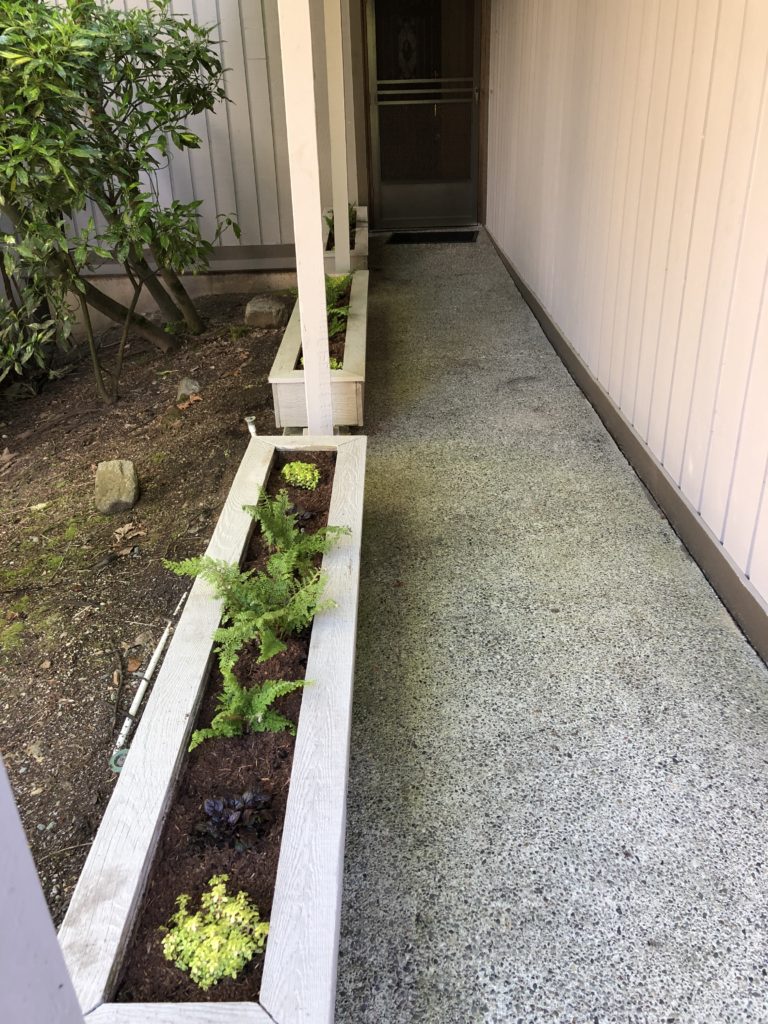Neli can text, turn on iTunes, and play games on the iPhone. Yes, there are smart phone games for smart cats. For example, here is the one that Neli is playing in the above video while Julian is watching football. The object of the game is to catch and crush the animated bugs. She’s so addicted that she’ll come running if she hears the click when Julian unlocks his iPhone.
Permanent link to this article: http://ediblethoughts.com/2018/05/25/neli-screen-addict/
May 19
Tunes for Menial Tasks
After I took the picture of the steamboats (see A Serendipitous Sight), I put the phone on the dining room table. Somehow Neli managed to get Siri to play my iTunes. She sat next to the phone and listened intently. This cat is WAY too smart for our own good,
Permanent link to this article: http://ediblethoughts.com/2018/05/19/tunes-for-menial-tasks/
May 19
A Serendipitous Sight
Sometimes serendipity strikes in the midst of menial tasks. I was attempting to scrape the schmutz out of the gas grill when I heard a steam whistle. Since Casa Sammamish is nowhere near an old railroad, it had to be the mini steamboats. I ran downstairs and grabbed the phone to take a picture. Last year a whole flotilla went past. I saw only three today.

The first two steamboats.
Permanent link to this article: http://ediblethoughts.com/2018/05/19/a-serendipitous-sight/
May 17
Rolling the Dice
A Monte Carlo simulation is a statistical technique to determine the probability of an event. The analysis is done by computer, because it would be far too tedious to make 500 or more runs of the simulation by hand. It’s commonly used to predict how long your assets will last in retirement. I’ve discovered two lesser known predictive analytic methods named after casino towns.
The Las Vegas Simulation. This simulation measures how likely you are to fly home from Las Vegas with an empty wallet between gambling and buying tickets to Cirque du Soleil and Céline Dion shows.
The Atlantic City Simulation. This simulation assesses the probability of your casino going bankrupt even before you open it.
Permanent link to this article: http://ediblethoughts.com/2018/05/17/rolling-the-dice/
May 14
For the Love of Bunny
[Sensitive souls might want to skip this post.]
Yes, I like bunnies. I like to eat them. I know that my appetite for rabbit is not shared by many Americans, some of whom were traumatized by the “pets or meat” scene in Michael Moore’s first film, Roger and Me. Below are three reasons why you might want to change your opinion.
Rabbit is a relatively lean meat. And yes, it does taste a bit like chicken.
Rabbits are very efficient at turning food into meat, which makes the meat a more sustainable choice than beef or pork. An article from Modern Farmer (link here) says that a rabbit can produce six pounds of meat with the same input of feed and water as it takes a steer to produce one pound of meat. They also grow and reproduce more rapidly than a steer.
Rabbits don’t need a heavy corn and soy diet to pack on the meat.
Finding rabbit meat isn’t easy here, although many upscale groceries will carry it in the freezer case. If you’re feeding a family, you may need more than one rabbit. It’s not cheap, as America doesn’t have mass rabbit feedlot operations the way it does for beef cattle. Many recipes for rabbit involve stewing because the meat is so lean. Most of the rabbit dishes I’ve eaten in France are stews. You can adapt any recipe for smothered chicken to use rabbit. I’ve also seen rabbit used in Creole/Cajun recipes. Hey, it beats nutria.
Probably the easiest way to consume rabbit is to order it off a menu. Last week at our neighborhood McMenamins I had a rabbit confit with pea shoots. It was quite tasty. Next time you see rabbit on a restaurant menu, take a chance and order it.
Permanent link to this article: http://ediblethoughts.com/2018/05/14/for-the-love-of-bunny/
May 10
Another Feathered Fatality
We’ve had a male pheasant in the neighborhood for the last week. It’s roosted on our roof and wandered around the street. Saturday I was doing some work in the front yard and heard a strange squawk. It was the pheasant, hanging out in the driveway next door.
Alas, the pheasant died earlier this week. He collided into a neighbor’s window. The neighbors mourned over the corpse, and then took him to a field away from the condos so it could nourish the other wildlife hereabouts.
Permanent link to this article: http://ediblethoughts.com/2018/05/10/another-feathered-fatality/
May 07
The Symbol of Bothell
Paris has the Eiffel Tower. London has Big Ben. New York has the Statue of Liberty. Saint Louis has the Arch.
Bothell has the Chicken.

This proud monument to poultry towers (about 15 ft) over the entrance to Country Village, an old-timey-themed collection of shops on a landscaped site just north of downtown Bothell. It is very much unlike the modern sterile malls throughout the US. These are old wooden buildings, interspersed with planked walkways, creeks, and ponds with ducks and geese. There are antique railway cars and boats, rigged as playground equipment for children. It’s an attempt at evoking memories of small towns of the American past. Pure kitsch, but on the cheap, with rough edges you would not see in Disneyland.
Country Village has fallen on hard times. The millenials are not interested in this stuff. We were saddened to learn that a developer purchased the site. In a year, the shops will close, the bulldozers will arrive, and eventually all this lovely kitsch will be replaced by an apartment complex.
This creates a dilemma. What to do with the Chicken? We must save the sacred symbol of our home town.
There is only one solution. Bothell City Government recently moved into a new (and very expensive) city hall. This facility is purely utilitarian, utterly lacking any style or panache. The front entrance faces a large empty plaza – a vast expanse of concrete with no purpose or soul. This is where the Chicken must be.
Here is the City Hall, as it looks now.

Here is the improved version.

Permanent link to this article: http://ediblethoughts.com/2018/05/07/the-symbol-of-bothell/
May 05
Probiotic Night
Thursday night I bought some short ribs for Korean grilled kalbi. We’ve found a great recipe from The New York Times. The ribs marinate overnight in a soy sauce-onion-puréed pear mixture, then get grilled.
So where do the probiotics come in? We served the ribs with napa cabbage kimchi and fermented pickled beets (not traditional, but it contained ginger and I thought it might work well with the meal). In addition, the gochujang that went into the marinade and the sam jang sauce that we served with the ribs were also fermented. My microbiome has some new residents.
Permanent link to this article: http://ediblethoughts.com/2018/05/05/probiotic-night/
May 05
The Shady Garden
We finally got some plants for the planters out front. It took a bit of consultation to select them. We sought input from Molbak’s. Our next door neighbor posted a query on Facebook. I emailed my sophomore roommate, who’s a horticulture professor in Virginia. Then we visited Sky Nursery and met Heather, one of the staff members there. She pointed us to some soft shield ferns, ajugas, and sedums. While we were there, I also picked up two padron pepper plants and Vietnamese coriander (also known as rau ram) for the upper deck. We also loaded up on soil and compost.
Below are the results. Julian actually did most of the planting, even though he claims all he can grow is mold. We wound up with an extra fern plant, which I planted in the ground at the entry to the entryway. Sure beats the plastic ferns that were in the planters when we moved into the condo.

Julian’s handiwork.
Permanent link to this article: http://ediblethoughts.com/2018/05/05/the-shady-garden/
May 05
Derby Day
I’m not much of a horse person, even though I have a degree in animal science. However, I do pay attention to the Triple Crown races every year. As with many people of my generation, the singular horse was and always will be Secretariat. His victory in the 1973 Belmont Stakes is unmatched in any sport, human or equine. (If you don’t believe me, here’s the video.) And I freely admit to crying when I heard that beautiful beast had to be euthanized because of a hoof infection.
Sadly, the “Sport of Kings” has its seedy side. Betting scandals. Jockeys having to do outrageous things to maintain their weight, similar to other athletes. Then there are drugs. When I was in grad school, one of my professors was a veterinary pathologist who documented widespread use of injected cortisone into the joints of horses and the damage it caused. Although an isolated cortisone shot can ease inflammation in horses, as in humans, repeated use can damage the surrounding bone. Shattered leg bones often lead to euthanasia in horses. (Exhibits A and B: Ruffian in 1975 and Barbaro in 2006.)
Yesterday on NPR, a new drug issue received airplay. Many thoroughbred race horses receive injections of Lasix (furosemide, a common drug used for high blood pressure in humans) to prevent bleeding into the lungs during the intense activity. Lasix has the effect of increasing urination in horses, just as it does in humans. This can result in as much as 25 pounds of weight loss. A lighter horse may be a faster horse. (The lost water can also lead to dehydration, which can adversely affect performance.) A bill has been introduced in Congress to standardize equine drug testing across the country and establish a single authority for these tests. This bill is controversial, particularly in Kentucky. I heard the article on my way to work yesterday and was struck by the following quote from a trainer: “I don’t like calling Lasix a drug. It’s a medication.” To the average person, all drugs are medications. It’s a matter of legality or potential for abuse.
Although I’m not a horse person, I do believe in making sure these animals get proper care. Research is needed to delineate the causes and potential treatments for lung bleeding in race horses. Veterinary scientists should study risk factors for lung bleeding, and if Lasix is the proper preventive measure. This would probably be difficult, as horse breeders and trainers would not willingly submit their prized animals to a rigorous randomized trial. Perhaps retired or less speedy horses could be recruited for such studies. Testing may also be performed to see if a particular gene is related to bleeds. Since thoroughbreds are quite inbred, such a gene could be widespread in comparison to horses with “hybrid vigor” (genetic speak for mutts). Maybe a little outbreeding could be beneficial to the long-term health of horses and horse racing.
Permanent link to this article: http://ediblethoughts.com/2018/05/05/derby-day/

Recent Comments